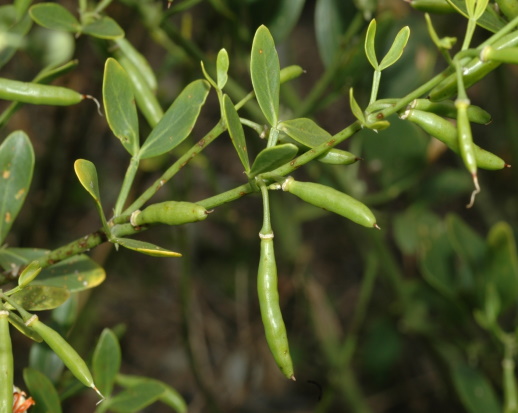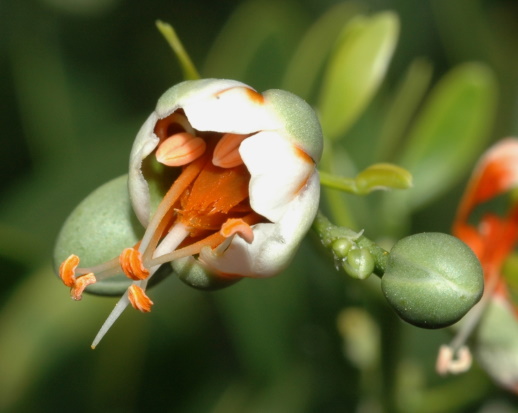Syrian bean-caper (Zygophyllum fabago) is an invasive plant in the creosote bush family (Zygophyllaceae). It is drought tolerant and dominates dry habitats such as rangelands and grasslands. By forming dense patches that compete with native plants for water and space, it impacts biodiversity. Syrian bean-caper is unpalatable to livestock and reduces forage quality. Control with herbicides is difficult.
Report a Syrian bean-caper sighting
Where it's found
Syrian bean-caper has not been found in Canada. It is native to the Mediterranean region and central Asia. It has been introduced into Australia and southern Europe, and has been reported in several states in the United States. It is found in dry rangelands, grasslands and disturbed sites, such as roadsides, corrals and gravel pits.
How to spot it
Syrian bean-caper is a bushy perennial plant that acts as an annual in regions with cold winters. The species can grow up to 1 m tall. Its leaves are opposite and compound, with a pair of oval-shaped leaflets that are thick, fleshy, and waxy. The flowers have five petals, and vary in colour from white to cream. Ten orange stamens extend past the petals. The fruit is a capsule containing five seeds.
How it spreads
Syrian bean-caper generally reproduces by seed, but can also generate new plants from pieces of its roots. Syrian bean-caper is planted as a medicinal herb and a caper substitute, and this can facilitate spread. It can also be spread by farm machinery.
What you can do
- Avoid planting invasive plants in your garden
- Use clean, high-quality seed that is certified if possible
- Ensure machinery, vehicles and tools are free of soil and plant parts before moving them from one area to another
- If you think you've spotted Syrian bean-caper or see it for sale in Canada, report it to the Canadian Food Inspection Agency (CFIA). The CFIA will follow up and determine if further action is needed.
What we are doing
Syrian bean-caper is regulated as a pest in Canada under the Plant Protection Act. It is also listed as a prohibited noxious weed in the Weed Seeds Order, 2016 under the Seeds Act. Importation and domestic movement of regulated plants and their propagative parts is prohibited.




